An Yimin temple recently discovered in New Taipei City’s Sansia District (三峽) could be related to an uprising against the Japanese colonial government in 1895, the city’s Department of Hakka Affairs said.
The temple is on a small mountain path on Yuanshan (鳶山) and, according to research conducted by Jianguo Elementary School teacher Chen Chung-yu (陳仲宇) in Taoyuan, it is the only Yimin (“righteous people,” 義民) temple in the district.
Sansia has traditionally been considered a Minnan region, while Yimin temples belong to Hakka belief, Chen said.
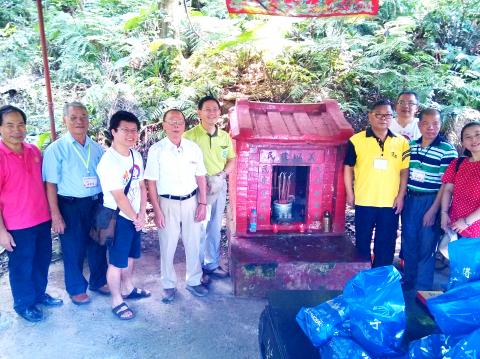
Photo courtesy of Chen Chung-yu
The Yimin belief is thought to stem from deified Hakka warriors who died putting down rebellions in Taiwan for the Qing Empire or during a rebellion against Japan following the ceding of Taiwan under the Treaty of Shimonoseki. Although Yimin belief is unique in the deification of Hakka fighters, it has been conferred upon Hakka, Minnan and Aborigines by the Qing Dynasty.
Chen said the architectural style of the temple is decidedly late Qing, and the couplets on the temple, “Our uprising heralds the new age, but the people reminisce the lands of old,” imply that its construction came on the verge of political change.
The temple is close to the site of the Victory of Fenshuilun (分水崙), where Japanese troops were ambushed by primarily Hakka fighters, Chen said, adding that it could mean the temple commemorated people who died in the battle.
The battle was part of the Japanese takeover of Taiwan in 1895, when Japanese troops put down a rebellion by the Republic of Formosa established by the gentry after the First Sino-Japanese War to protest the ceding of Taiwan.
Chen said that the temple is considered a bao zhong Yimin temple (褒忠義民廟), a specific type of temple reserved for those of Hakka heritage, but the owner of the plot of land on which the structure stands said that the temple was built in 1910 by Fukienese.
Department of Hakka Affairs Director Lai Chin-ho (賴金河), academics studying Yimin belief and local history and culture enthusiasts visited the temple, hoping to find more information.
Prior to the discovery of the temple, the earliest known Hakka presence in the district was between 1912 and 1926 when they first moved into today’s Wuliao (五寮) and Jinmin (金敏) townships to cultivate tea, Lai said.
However, the discovery of the temple suggests it is possible that there were Hakka in Sansia during the early Japanese colonial era when anti-Japan rebellions were rife, Lai said, adding that this was a significant discovery for Hakka history in the district.
If research confirms Chen’s theory and the landowner agrees to subsequent development, the department would ask for funding from the central government to turn the area into a tourist site, Lai said.
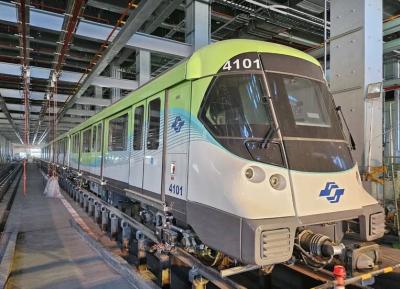
The Taipei Mass Rapid Transit (MRT) Wanda-Zhonghe Line is 81.7 percent complete, with public opening targeted for the end of 2027, New Taipei City Mayor Hou You-yi (侯友宜) said today. Surrounding roads are to be open to the public by the end of next year, Hou said during an inspection of construction progress. The 9.5km line, featuring nine underground stations and one depot, is expected to connect Chiang Kai-shek Memorial Hall Station to Chukuang Station in New Taipei City’s Jhonghe District (中和). All 18 tunnels for the line are complete, while the main structures of the stations and depot are mostly finished, he
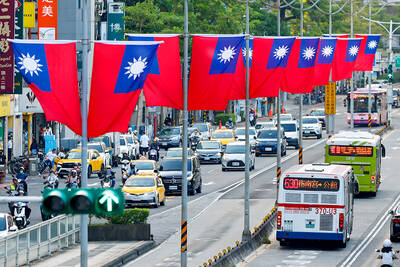
Taipei is to implement widespread road closures around Taipei 101 on Friday to make way for large crowds during the Double Ten National Day celebration, the Taipei Department of Transportation said. A four-minute fireworks display is to be launched from the skyscraper, along with a performance by 500 drones flying in formation above the nearby Nanshan A21 site, starting at 10pm. Vehicle restrictions would occur in phases, they said. From 5pm to 9pm, inner lanes of Songshou Road between Taipei City Hall and Taipei 101 are to be closed, with only the outer lanes remaining open. Between 9pm and 9:40pm, the section is
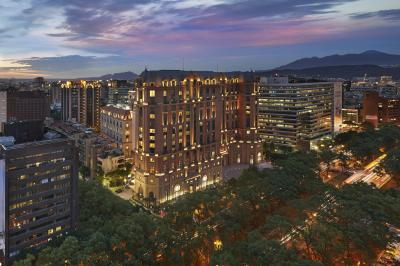
The first global hotel Keys Selection by the Michelin Guide includes four hotels in Taiwan, Michelin announced yesterday. All four received the “Michelin One Key,” indicating guests are to experience a “very special stay” at any of the locations as the establishments are “a true gem with personality. Service always goes the extra mile, and the hotel provides much more than others in its price range.” Of the four hotels, three are located in Taipei and one in Taichung. In Taipei, the One Key accolades were awarded to the Capella Taipei, Kimpton Da An Taipei and Mandarin Oriental Taipei. Capella Taipei was described by
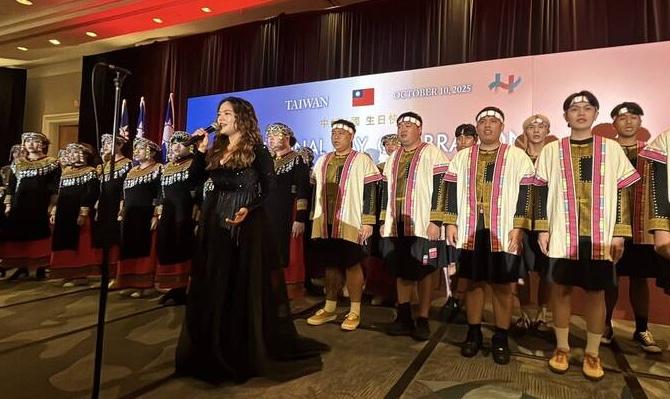
The Taipei Economic and Cultural Office in Vancouver, Canada, on Saturday hosted a reception to celebrate Double Ten National Day. Conservative Canadian lawmaker Marc Dalton called Taiwan a “beacon of courage and resilience in the face of rising authoritarianism,” according to a post on the Taiwan in Vancouver Facebook page. Also in attendance were fellow conservative caucus members Tako Van Popta and Chak Au, who said that Taiwan plays an “indispensable role” in ensuring global peace, prosperity and stability due to its strategic position in the Indo-Pacific region, it said. Canadian lawmaker Michael Cooper also recorded a message wishing Taiwan a